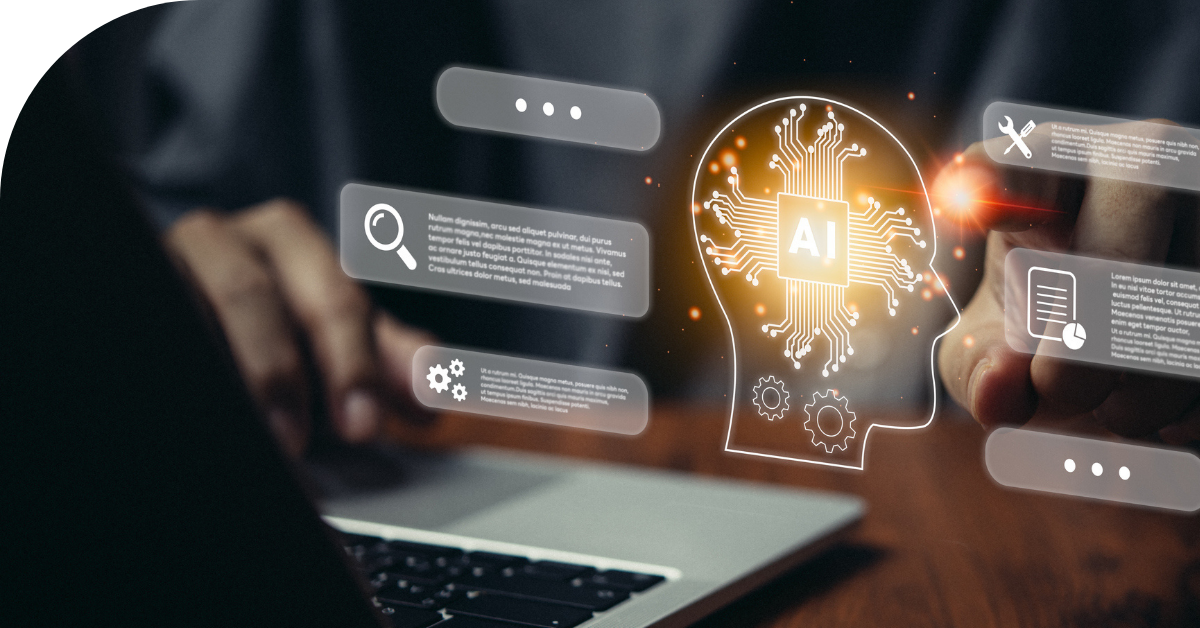Interview with Tina Starr, EVP of Revenue
By Luke Peterson, Demand Generation Manager
As marketing budgets tighten and expectations rise, AI has emerged as both a creative partner and a performance driver. To explore how this transformation is reshaping go-to-market strategy, I sat down with Tina Starr, EVP of Revenue, for a candid conversation about where AI is delivering real impact and where the biggest opportunities still lie ahead.
“AI isn’t a buzzword anymore,” Tina says. “It’s a revenue enabler, and it’s already changing how we go to market.”
In this conversation, Tina shares how her team uses AI across the customer journey and why she believes we are only at the beginning.
Smarter Targeting with Audience Intelligence
Luke: Let’s start with audience targeting. How has AI changed your approach to segmentation?
Tina: “Targeting used to rely heavily on instincts and broad demographic assumptions. Now, with AI, we’re operating with real behavioral intelligence. It analyzes thousands of signals, from browsing patterns to real-time intent, allowing us to uncover micro-audiences we couldn’t identify before.”
This shift toward precision targeting has improved performance for more than just large enterprises. Growth brands are also seeing the benefits.
Tina: “We’ve seen campaigns improve dramatically by letting AI determine the ‘who.’ It’s less guesswork, more relevance, and that translates directly into revenue.”
A recent study by ten26media.com supports this, showing a 27% increase in ad performance and a 25% reduction in costs when AI-powered targeting is used.
Luke: That’s impressive. As targeting gets more precise, how important is first-party data becoming in all of this?
Tina: “It’s absolutely critical. With the decline of third-party cookies, first-party data is the new competitive advantage. It gives us a consent-based, trustworthy view of our customers.”
Luke: And what about blending that with other data sources? Is there still value in using third-party data?
Tina: “Definitely. The key is being strategic. The real power comes from combining high-quality first-party data with selective, privacy-compliant third-party datasets. That mix allows AI models to see a fuller picture, uncover richer insights, and expand reach without sacrificing accuracy or compliance.”
Campaign Optimization in Real Time
Luke: Optimization has always been a challenge for marketers. How has AI helped solve that?
Tina: “In the past, performance reviews happened after the campaign ended. Now, AI helps us optimize in real time. We’ve increased our media yield by over 30%, which has completely changed how we view ROI and reduce waste in media spend.”
AI enables fast, continuous adjustments with less need for manual oversight.
Tina: “In some cases, AI is testing more than 100 creative variations per day. That kind of scale just isn’t possible without automation.”
The 2025 Adobe Digital Trends Report indicates that companies leveraging generative AI are experiencing transformative benefits, including accelerated revenue growth and more efficient content creation.
Luke: That’s a big shift. Do we also combine campaign optimization with measurement and measurement technology?
Tina: “Absolutely. Optimization and measurement now work hand in hand. AI not only helps us improve campaigns in the moment but also enhances how we measure what’s working. With advanced analytics and predictive modeling, we can see performance signals earlier and more accurately. It’s creating a closed feedback loop where every impression, click, or interaction feeds back into smarter decision-making.”
Luke: So measurement is no longer something that happens after the fact.
Tina: “Exactly. It’s now a living part of the optimization process. The ability to measure and adjust simultaneously means campaigns evolve in real time based on verified results, not assumptions.”

Creative That Writes (and Rewrites) Itself
Luke: What role is AI playing in the creative process?
Tina: “A big one. People assume AI is just for targeting or analytics, but it’s making a real impact on creative as well. It helps generate copy, suggest image pairings, and even recommend video edits based on what’s likely to perform best. For lean teams, this kind of support is a significant advantage. Brands that used to update creatives every six weeks can now refresh content weekly. AI gives them the speed and insights to stay relevant without needing more resources.”
IBM has demonstrated this in practice. Generating 100 assets and over 1,000 marketing variations for a campaign in just minutes, underscoring how AI can dramatically accelerate creative testing and optimization.
Luke: With that kind of volume and speed, how are brands using all those creative variations strategically?
Tina: “That’s where things get interesting. High-volume creative and message testing isn’t just about efficiency; it’s becoming a competitive necessity. As industries become more crowded, brands need constant insight into how their company, product, and service are being perceived in real time. The data generated from continuous creative testing helps refine positioning, messaging tone, and even product strategy. It’s not only about what works creatively—it’s about understanding why it works and how to stay one step ahead.”
Luke: So the testing process itself becomes a source of intelligence.
Tina: “Exactly. Every test feeds back into a broader picture of market dynamics and brand performance. The more we test, the more we learn, not just about the ad, but about the audience, the message, and the competition.
Generative AI: From Reactive to Adaptive
Luke: You’ve mentioned a shift from responsive AI to generative AI. What does that change look like?
Tina: “This is where things get interesting. Generative AI doesn’t just react to user behavior; it predicts it. We’re starting to see ads that can adjust in real time based on who is viewing them.”
Budgets can also shift automatically toward the highest-performing channels without manual intervention.
“Some of our early pilots with generative AI have produced more than 30% improvement in ROI,” Tina says, citing insights from Deloitte’s 2024 State of Generative AI in the Enterprise report, which found that 20% of organizations report ROI in excess of 30% from their generative AI initiatives.
The momentum is strong. McKinsey’s 2025 Global Survey on AI found that 92% of companies plan to increase their AI investments over the next three years.

AI and Humans: A New Creative Partnership
Luke: What do you say to marketers worried that AI could replace them?
Tina: “AI is not here to replace people. It is here to support them. The best outcomes happen when creative teams, strategists, and machine learning tools work together.”
AI handles repetitive tasks, allowing human teams to focus on high-value, creative work.
“At the end of the day, marketing is still about storytelling and connecting with people. AI just helps us do that more efficiently and at greater scale.”
Tina sees a future where AI tools are easier to use and more accessible to marketers at every level.
Closing Thoughts from Luke Peterson
AI is no longer a behind-the-scenes tool. It shapes how we build audiences, create messages, and drive performance. As Tina made clear, the most successful marketers will be those who embrace this technology and use it to amplify their strategies.
If you haven’t already started planning how AI fits into your advertising approach, now is the time.

Luke Peterson
As Choozle’s Demand Generation Manager, Luke brings a broad range of expertise. With both brand and agency experience, Luke has developed skills in strategy development, go-to-market execution, and creating efficiency through marketing operations. With a passion for creating scalable and repeatable processes, Luke is always looking for the next problem to solve.





